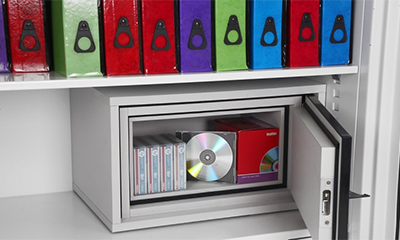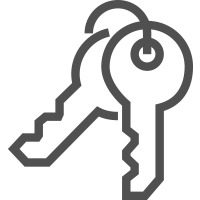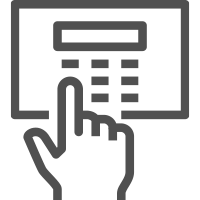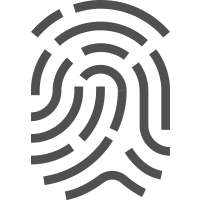Safes Buying Guide

Have you heard, that according to statistics, about 55% of companies that have had a fire damage, have to fold within 12 months? To prevent this from happening, we advice to protecting all your important paper documents or data from fire, but for possible burglary as well. This safe buying guide provides you with essential tips, that you need to consider before you choose a safe.
Safe Usage

Usage
Burglary or fire protection are the main reasons for buying a safe. While all safes provide basic protection against theft, some ranges are fire and/or water resistant for a limited time as well.
To choose the right safe, you need to think about which items you would like to store. We advice drawing up a list, for example cash, credit cards, cash box, documents, passport, contracts, filings, jewellery, digital media like CDs, DVDs, USB-Sticks, drives etc. If you would like to protect valuable items, the classic security safe is the right choice. But in case you would also like to protect your paper documents and/or digital media against fire, then you require a fireproof safe.
Storage size
Normally a safe is bought only once due to its high asset cost. For this reason we advice calculating a storage space of approximately 30 - 40 % more than you generally need, or take the next size up, within the range, to accommodate further items.
Type of lock

Key lock
Locks of this type are the most traditional and are delivered with 2 keys. For this lock type there is a risk that the keys will be lost or even stolen, but generally the manufacturers are able to supply replacement keys. To obtain replacement keys the manufacturer requires proof of purchase in the form of an invoice copy or delivery note.

Electronic lock
These can be easily opened and closed via enter a pin code. The pin code can be changed as often as you like. Additionally the electronic lock provides warnings when the battery power is low, so that you know when you have to replace them.

Fingerprint
This is a type of biometric security in the form of a fingerprint which is initially scanned during set-up and confirmed. To open the safe, press your finger against the scanner and open the door. The fingerprint lock system is able to store several fingerprints. This system also provides low battery warnings, so that you always know when the batteries need to be replaced.

Combination
A combination lock is a type of locking device in which a sequence of numbers is used to open the lock. It´s especially practical and reliable as no additional key is needed and as a rule you can choose your own combination numbers.
Our Products
The classic safe offers protection against burglary. The storage volumes start at 10 and go up to 78 litres. Furthermore some of these models also offer some protection against fire.
Fireproof safes offer some theft protection, but are especially built to guard against the heat of fire. The duration of fire protection can be from 30 to 120 minutes. For specific safe models you can also install an optional data protection insert for additional protection for sensitive digital media.
Fireproof filing cabinets offer protection for paper documents to the recognised international standards. Additional fire protection for media is possible using an optional data protection insert.
Data safes are compact and offer fire protection for highly sensitive computer data and storage media. The fire protection varies from 60 to 120 minutes.
High security safe have a high burglary protection due to their emphasis on the strength of the materials and construction. Some of these models have additional fire protection for paper documents. The optional data insert protection can also be used.
Deposit safes have a slot or drawer that enable you to deposit cash throughout the day without opening the safe. Key deposit safes have a similar function, where the slot is on the side.
Test specifcations
Safes are certificated according their resistance to burglary and fire. This has an impact on the insurance rating. All insurance amounts mentioned in this guide are approximate and may vary due to location. We advise contacting your insurer to clarify which rating you need.
Burglary protection
EN1143-1: The European standard for resistance to burglary attack with various resistance grades. The certificate is given when safes hold out against different burglary equipment. It includes partial access e.g. opening the door, and full access e.g. completely cutting out one side. Additionally the test includes how well a floor fixing will hold. Depending on the class, the different strength materials and construction are used to classify into specific resistance grades. The higher the resistance grade or class is, the higher the insurance cover.
| Business and private | |
| Resistance Grade N (0) | up to €6,000 |
| Resistance Grade 1 | up to €10,000 |
| Resistance Grade 2 | up to €17,500 |
| Resistance Grade 3 | up to €£35,000 |
| Resistance Grade 4 | up to €60,000 |
| Resistance Grade 5 | up to €100,000 |
EN14450-S1 and S2: The European standard for resistance to burglary attack has been grouped into two different security levels. Level 1 a single-walled safe, level 2 a double-walled safe. Similar to the test standard EN1143-1, in this process the safe is tested with the help of equipment. In this process the safe has to hold out for a specific time, additionally the strength of the anchoring is tested. For having a full insurance protection, you need to fix the safe on the floor.
| Business and private | |
| Security Level 1 | up to €2,000 |
| Security Level 2 | up to €4,000 |
Fire security
Fire test standards: The fire test standards below require that the critical maximum temperature of the following media is not exceeded:
- 175 degrees for paper,
- 120 degrees for digital media,
- 52 degrees for computer data.
NT Fire Test: The NT fire 017 test is a well-known Swedish certificate, that defines fire protection levels of 60, 90 and 120 minutes. The test is passed, when the internal safe temperature doesn´t exceed the critical values for the whole test period. The tested fire proof safes are installed with special expanding seals which offer protection from fire gases and firefighting water, but this protection is not given against total or partial submersion. Additionally this certificate offers a drop test from a height of 9.15 metres.
- NT FIRE 017-60 Paper: Requires safe to be heated to 945°C for 60 minutes. The maximum temperature inside the cabinet shall not exceed 175°C.
- NT FIRE 017-90 Paper: Requires safe to be heated to 1050°C for 90 minutes. The maximum temperature inside the cabinet shall not exceed 175°C.
- NT FIRE 017-120 Paper: Requires safe to be heated to 1090°C for 120 minutes. The maximum temperature inside the cabinet shall not exceed 175°C.
- NT FIRE 017-120 DIS: Requires safe to be heated to 1090°C for 120 minutes. The maximum temperature inside the cabinet shall not exceed 52°C.
EN1047-1: In principle this certification is quite similar to the NT fire test. It requires that safes are heated to over 1090°C where the internal temperature shall not exceed to specific degree. The fire protection levels are defined from 60 up to 120 minutes and offer protection from fire heat, gases and firefighting water. Additionally this certifcate offers a drop test from a height of 9.15 metres.
EN15659-LPS 30P, LPS 60P: This certificate offers fire protection for paper, LPS 30P up to 30 min. and LPS 60P up to 60 min. The internal maximum temperature shall not exceed 175°C.
DIP 120-60 DMAA (Grad B): Digital Media fire protection where the internal temperature will not exceed 120°C.

